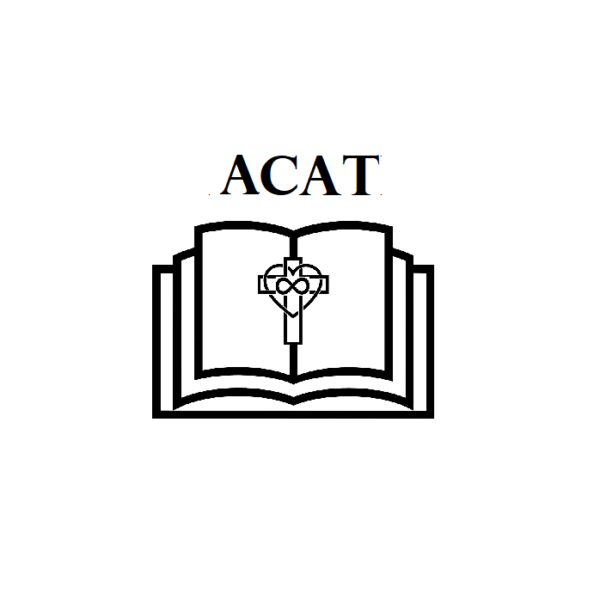(Ordinarily, Father Mark Nolette’s posts appear on his blog, The Anchorite. If you have not yet seen his page or subscribed to his blog, it is well worth checking out. Since his post today offers very timely support and validation for the autistic community, I am cross-posting here. – Aimee O’Connell)
I begin with a statistic. The New York Times reported this morning that the number of confirmed cases of COVID-19 worldwide, as of yesterday, is 160,000. About half of these are in China. On the one hand, if we focus on this number only, it seems rather small compared to the total population of the planet, which is estimated at over seven billion people. This number is, for the moment, far smaller than the number of people who are infected with a typical late winter flu outbreak. However, that’s not the number that has experts worried. They believe that the number of cases will explode geometrically, becoming many times that number before the outbreak peaks.
How many times?
There we find a difference of opinion. Last week, the New York Times reported on four possible scenarios for how many people in this country could be infected with coronavirus, and how many could die. The estimates of infection range from 15% to 50% of the population. The number of deaths range from 500k to 2 million. The experts acknowledge that containment efforts, if applied, could reduce these estimates. Moreover, because coronavirus is novel, no one knows if some people might have some immunity to it or not.
The fear we are feeling is not so much about the numbers of people who now have it, a number we can safely estimate. The fear is about the uncertainty of how many people will eventually get it, and how bad it will be. Moreover, given that a sizable number of people in this country do not trust scientific or medical experts, that compounds the uncertainty. Moreover, the very existence of this virus among us makes us feel vulnerable. All the king’s horses and all the king’s men (and all the king’s money) cannot drive it away. No wall can keep it out. We Americans are not used to feeling vulnerable. This only heightens the anxiety.
What do we have, then? A grave level of fear and anxiety. An overwhelming sense of impending doom. People grasping at any straw, even to the point of stockpiling toilet paper, in order to feel some sense of security or preparedness. A sense of panic that may be more severe than the virus itself.
Welcome to the world of autistic people.
What I am seeing, as a priest and an autistic person, looks very much like autistic anxiety. Some of the reactions I see look very much to me like autistic meltdown. The anxiety I often feel before a weekend liturgy is something like this. The anxiety I feel when something unexpected, like a funeral, enters my life is something like this. The anxiety I feel when some future plan is still uncertain is something like this. As an autistic person, I have needed to grapple with anxieties like these, learn to decipher them, and learn to live with them. Therefore, I may be able to offer something from my experience as an autistic person that could help many other people during these trying times.
What have I learned that may be of help to others?
1) Things are not as bad as they feel. Yes, I am well aware of the danger of minimizing the risk of coronavirus. However, my sense is that the opposite is the greater danger; that people will panic and make the danger more than it really is. Then, with panic in control, people do not think well. They may make choices that make the situation worse. They may look for people to blame. Sometimes, when I am celebrating Mass, it can feel as though I were the deer and the congregation were all hunters. Now, there’s a kernel of truth in this. Social exposure of this kind is difficult for me. However, it’s not quite as bad as it might feel for me at that moment. In the same way, coronavirus is a real danger, but it’s not quite as bad as our panic might make it out to be.
2) We are not powerless. When anxiety becomes panic, we feel overwhelmed. We feel that we have no control, no options. We learn to step back when this happens and remind ourselves that this is not true. As an autistic person, I know that there are ways to manage anxiety. There are also ways to address the outbreak and reduce the risk. In managing anxiety, there are techniques like cognitive behavioral therapy, which help us examine our thoughts and see if they correspond to what really is. Many people find that a few moments with camomile tea helps them soothe their nerves and be recollected. Then, when anxiety and panic are more manageable, we can look at the actual situation and take appropriate action. There are ways to significantly reduce our risk of catching or spreading coronavirus.
3) We must never deny or ignore our needs. This COVID-19 outbreak reminds us of our fundamental vulnerability as human beings. We may find it difficult to acknowledge this vulnerability, to ourselves or to others. We may feel the overwhelming temptation to camouflage those weak spots at all costs. As an autistic person, I am well aware of my own vulnerabilities and limitations, especially in social situations. Nevertheless, I have found that the stronger and more courageous thing to do is to acknowledge those vulnerabilities to myself and to others. Paradoxically, this unlocks a strength in me and in others that makes all of us stronger. Acknowledging our legitimate needs, and drawing healthy boundaries, are essential for our health and survival. This is all the more true in the stressful situation we now find ourselves in.
4) We are not alone. Perhaps the greatest danger when we feel overwhelmed with intense anxieties, panic, or depression is the sense that each one of us is alone in this. No one else could understand, we tell ourselves. In this kind of isolation, we feel weaker. We become easier prey to panic, depression and despair. As an autistic person, I grew up with a profound sense of being “different” without being able to name that difference. There were things about me that others could not understand, and there were things about others that I could not understand. Though there is truth in this, there is also a danger – the danger of feeling ultimately alone in a dangerous world. When I find others who share some of these attributes with me, I know I am not alone. It is important for us all to share our anxieties and concerns with others so that we know we are not alone.
5) We are saved by Love. Everything I have tried to say is summed up here. It is Love that saves us. It is Love that empowers us. It is Love that assures us, above all, that we are not alone. It is Love that we need more than any other thing. And this Love is God. As an autistic child, I felt more withdrawn from other people than I do now. The first things to reach me were what some call “special interests” – my love for astronomy, dinosaurs, history, and many other things I began to discover. Caught up in love for these things, I could easily talk your ear off, whereas I’d be silent most of the time otherwise. Some see these interests as excessive and pathological. Not necessarily. They are meant, for the autistic person, to be a training ground for love. Learning how to love these things helps us begin to love other people and, ultimately, to love God with that same total devotion that flows from the very marrow of our bones and the very cardiac tissue of our hearts. All of us, faced with the fears caused by this outbreak, can renew our love for our own interests and, especially, for God who is Love. It is this Love that ultimately frees us from panic and fear. We need to do what we can to open ourselves as fully as possible to this Love.
This is why I have argued, and continue to argue, that we need the Sacraments and, especially, the Mass and the Eucharist at this time. Yes, we should follow flu protocols and take all reasonable precautions to safeguard ourselves and our loved ones. However, we cannot deny or ignore our need for Love. Our need for Christ. He has told us that we need to eat His Flesh and drink His Blood so that we might have the fullness of His life in us. Christians of past centuries believed that this need was so fundamental that it was worth risking their lives for it. That has not changed. We need the Lord, and we need to follow His own teaching of how we can best receive His love. Who could know this better than Him?
I leave you with this in the hope that my insight – that our experience of this outbreak parallels autistic experience – will be helpful, as well as my sharing of what I have learned from this. It may be that this outbreak is a time when people who may have been shunned as eccentric or lacking in social graces may have something most valuable to offer the world.
May the love of the Lord be with us, now and always!





